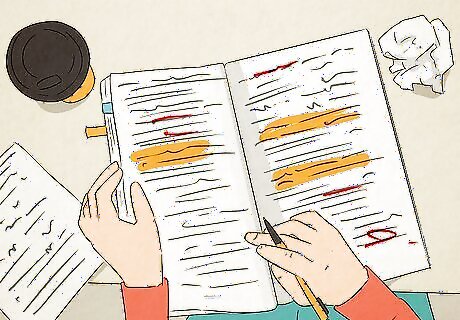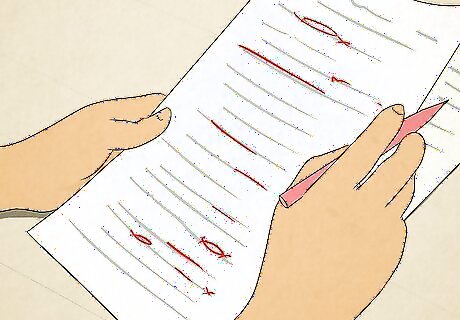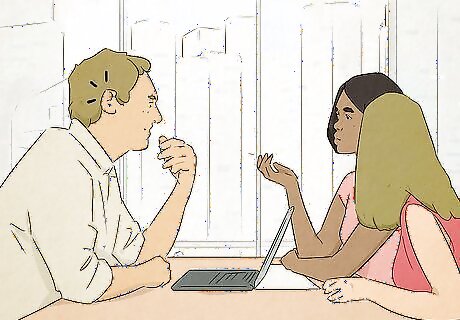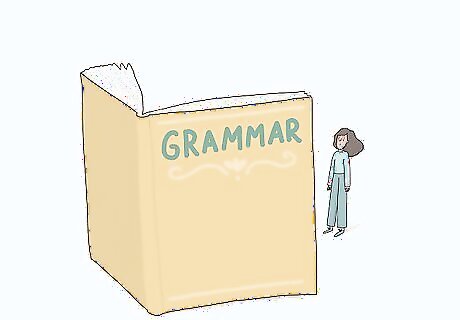
views

Take a break from your article before starting any editing work on your paper. It is highly essential that if you are planning to review and edit the work you have written you take a total break from everything related to the paper. The familiarity of the content and the knowledge of the thought process during the time and other factors usually make you skip through sections of the paper that might contain potentially quality-risking errors. Taking a break will help minimize this familiarity and allow you to start editing with a fresh perspective.

Read the writing style, article length, and quality requirements set by the journal. This is the official first step in editing the paper. Attempting to edit the journal paper blindly can lead to unnecessary edits, or potentially removing key information from the journal paper. Take some time to familiarize yourself with the requirements of the journal where you are planning to submit your paper. This will help you create a set of guidelines to check for your paper.

Compare the unedited paper to a fully edited and published journal paper. Pay attention to grammar, length, sources and citations, as well as the writing style. No two journal papers look exactly the same, but some common traits will be found. Journal papers tend to be written with a very unbiased and research-oriented writing style, for a professional sound. It can also help to find a journal paper template online and note any discrepancies, such as a missing introduction, title page, or appendix.

Split the journal into multiple parts. If editing online, copy and paste the article into a separate document. Split the article by section, such as the introduction in one spot, and the charts and graphs in another section. Focus on one section at a time to avoid being overwhelmed by information.

Create a set of guidelines and stick to it. Write or type out a list of mistakes, as well as how to edit them in a document. When an edit is finished cross it off and move to the next one. This list method will prevent you from getting lost during your editing process and will help keep the process smooth and organized.

Identify any common mistakes in your previous writings and check for the same in the present document. This will help increase the efficiency and turnaround time of your editing phase. You will know where and what to check for first in the present article. Going through common mistakes is helpful, but it is not a substitute for inspecting the entirety of your paper.

Apply common spelling and grammar check tools. This checks for any silly errors. This is, as mentioned earlier, another trick to hasten the editing process. However, this, as said before, should not be a substitute for reading through the entire work. Tools such as Grammarly and the built-in spell checks on Google Docs and Microsoft Word tend to be the most efficient.

Take a second break. Don't look at the journal paper at all this time. Give your mind a chance to relax, and take some time to freshen up. Some of the most common methods of relaxing are meditation, watching a movie, or even just taking a nap! Breaks are key to resetting your mind and perspective so that you can make changes freely. Furthermore, breaks can increase your productivity significantly as counterintuitive as it may seem!

Reread the entire document and review the paper for content quality, coherence, style conformity, and length. It can help to read the document out loud and note down any strange-sounding sentences. This is the core step of the entire process. Ensure that you are stress-free, calm, and seated in a peaceful area when doing this step. Do not read through the paper in a hurry. Take all the time you need to read it once, twice, or more times.

Consult with an external editor. A secondary editor will have a fresh perspective and will be able to catch mistakes that you miss. Preferably, find an external editor with more experience than yourself.

Repeat all steps as necessary. Run through the steps multiple times, until you feel that you can't find any more edits. Not each step needs to be done over and over again, but it can help to focus on specific tasks. For example, spelling and grammar are some of the most overlooked mistakes in writing.

Submit your paper once you are satisfied with it. Once you have polished your paper and confirmed that it has no problems that you see, you are ready to send it in!




















Comments
0 comment